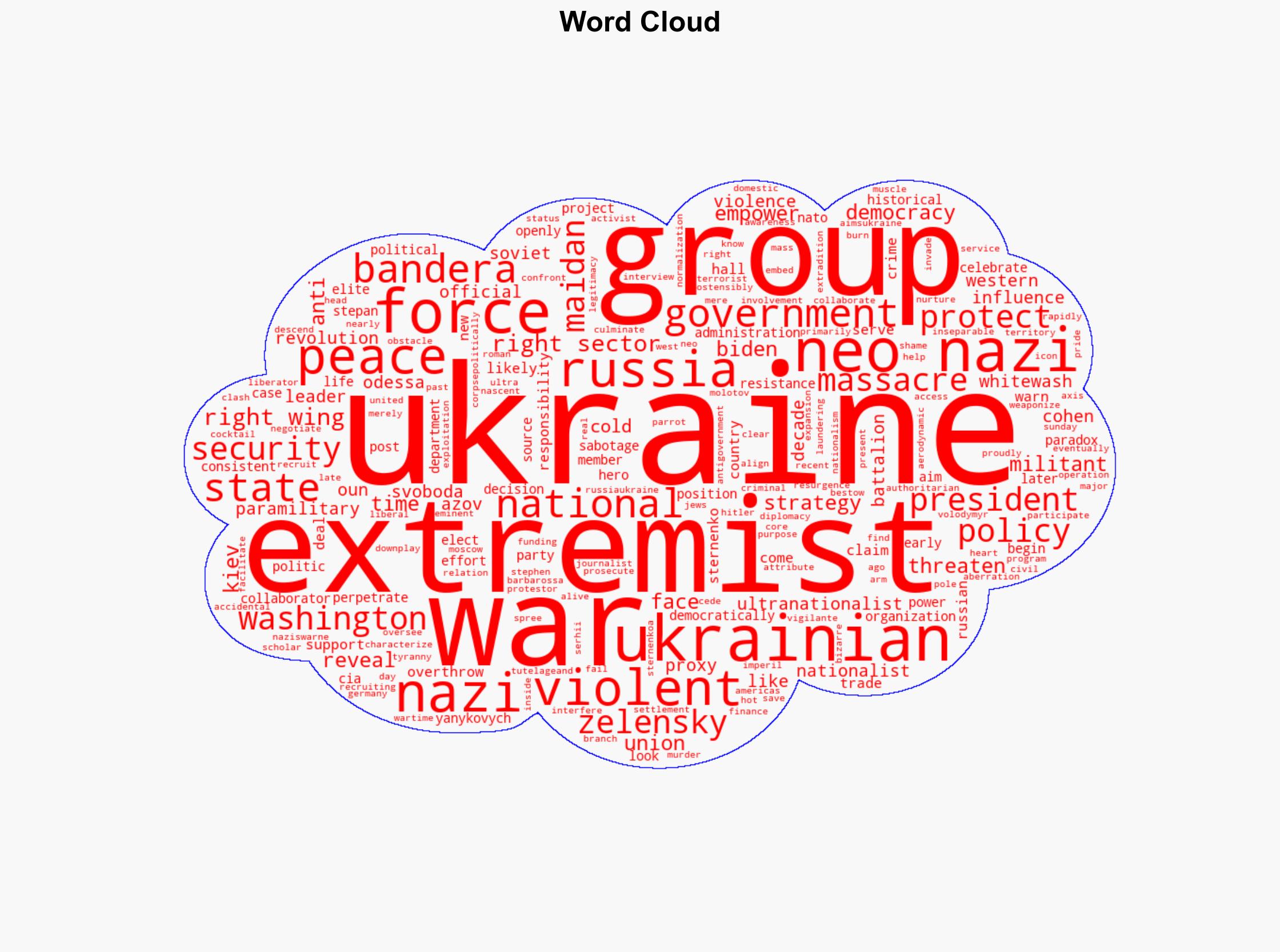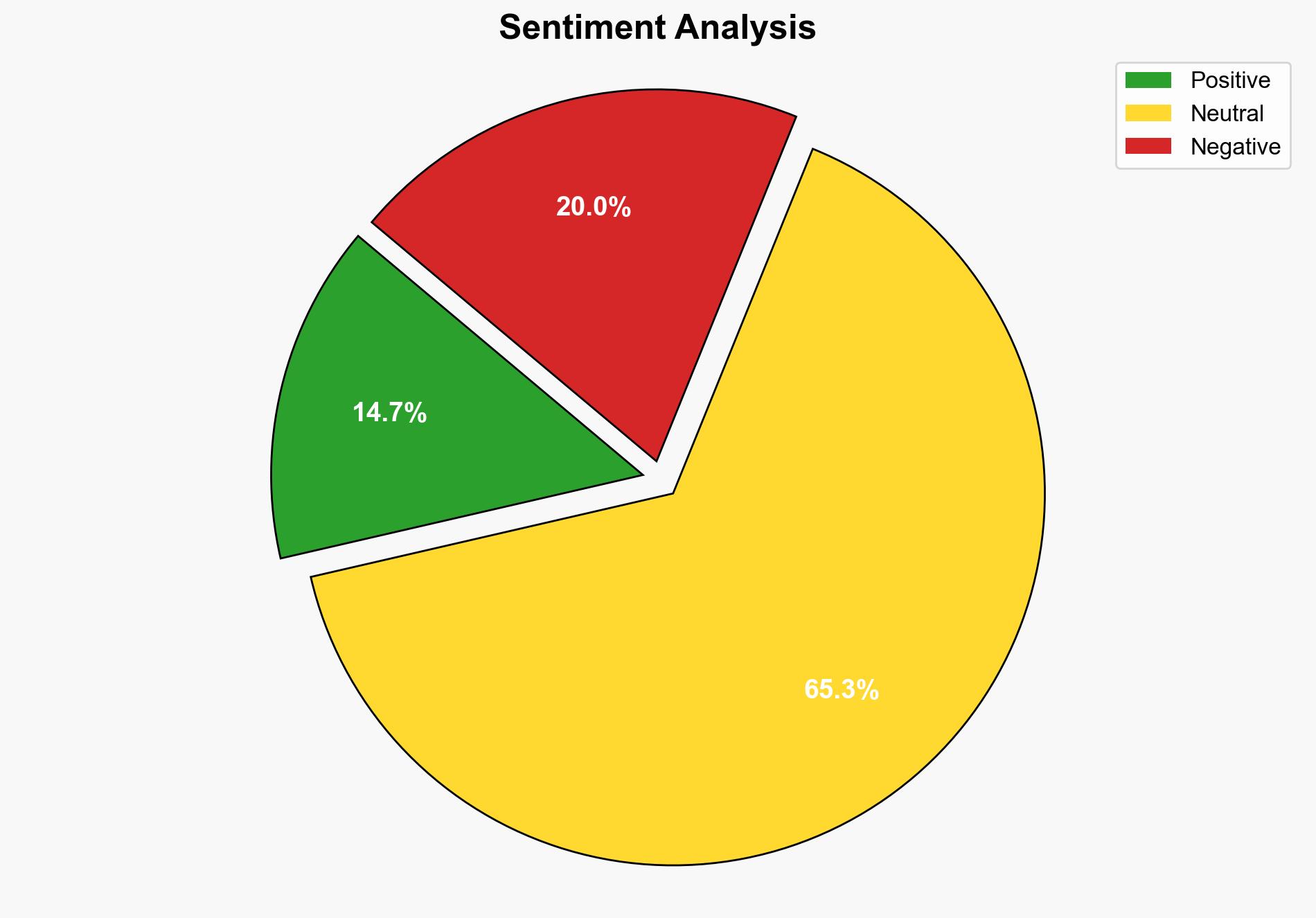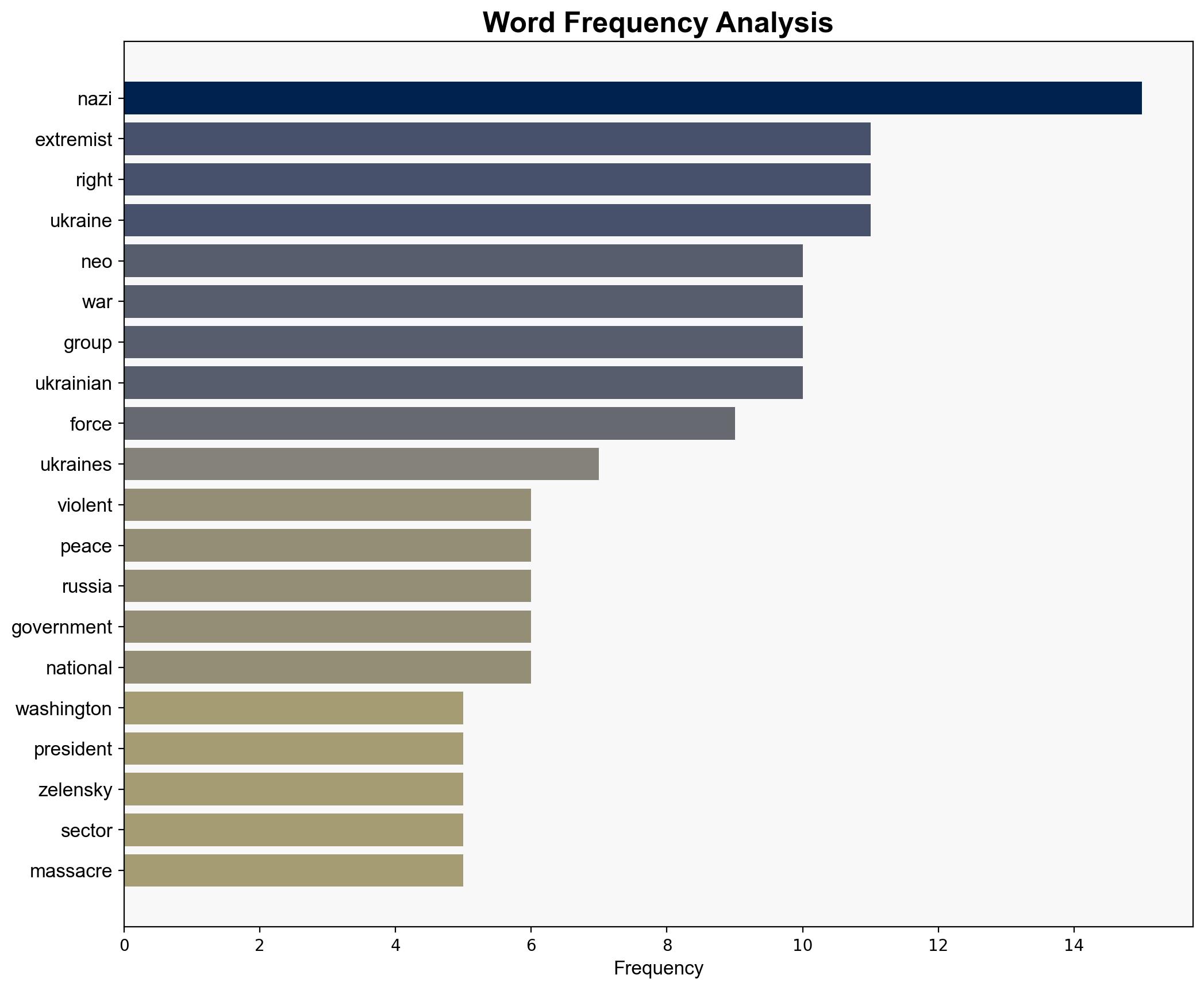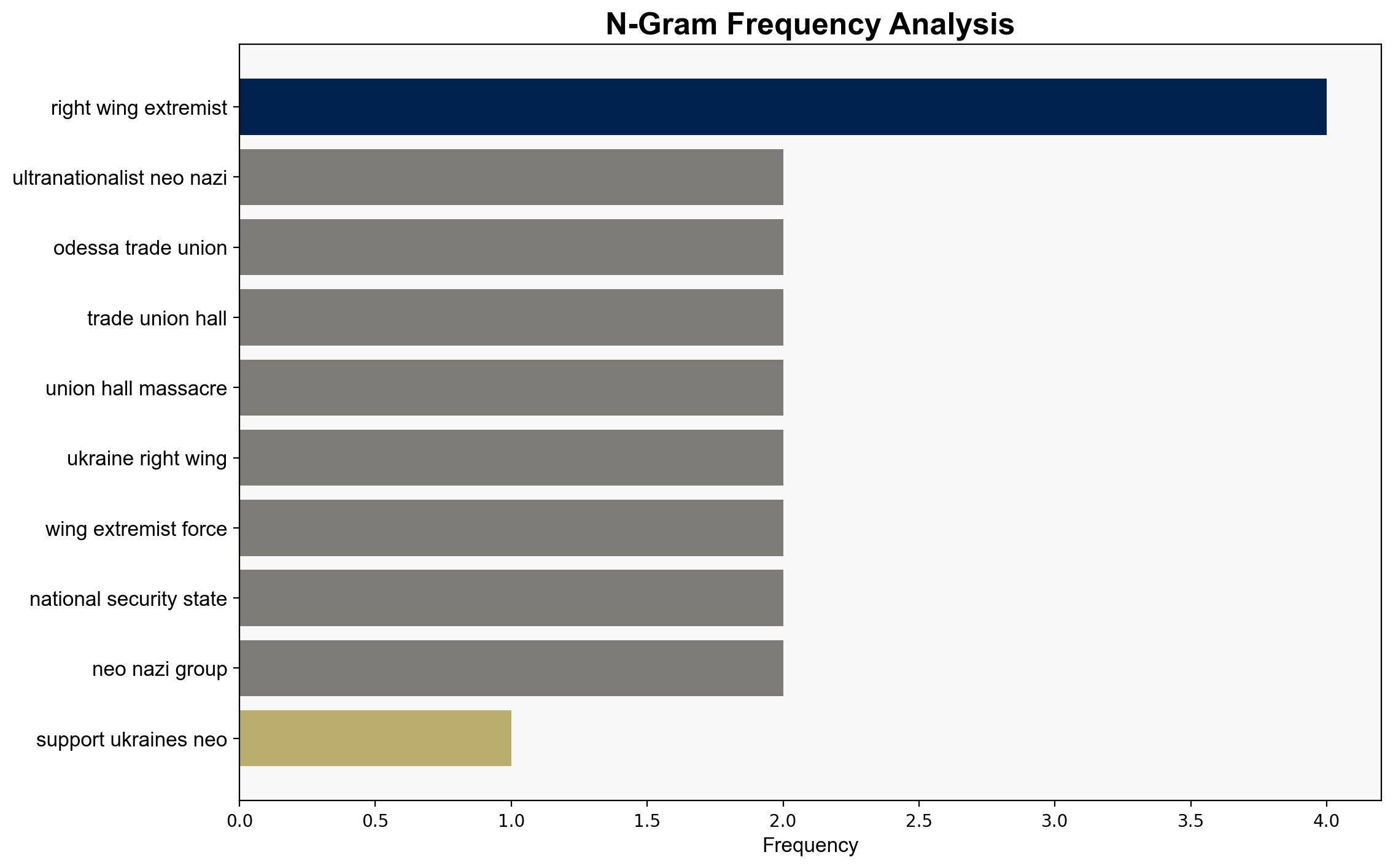How US Support for Ukraines Neo-Nazis Imperils Diplomacy – The American Conservative
Published on: 2025-08-29
Intelligence Report: How US Support for Ukraine’s Neo-Nazis Imperils Diplomacy – The American Conservative
1. BLUF (Bottom Line Up Front)
The most supported hypothesis is that U.S. support for Ukrainian nationalist groups complicates diplomatic efforts with Russia, potentially destabilizing the region. This assessment is made with moderate confidence due to the complexity of geopolitical dynamics and the presence of conflicting narratives. It is recommended to reassess the nature and extent of U.S. involvement with Ukrainian groups to mitigate diplomatic fallout and enhance negotiation prospects with Russia.
2. Competing Hypotheses
1. **Hypothesis 1**: U.S. support for Ukrainian nationalist groups, including those with neo-Nazi affiliations, is primarily a strategic move to counter Russian influence, despite the potential for diplomatic complications.
2. **Hypothesis 2**: The U.S. inadvertently empowers extremist elements within Ukraine, which undermines diplomatic efforts and risks escalating conflict with Russia.
Using ACH 2.0, Hypothesis 2 is better supported due to historical precedents of U.S. involvement with controversial groups and the explicit mention of neo-Nazi affiliations in the source. Hypothesis 1 lacks strong evidence of strategic intent outweighing the risks.
3. Key Assumptions and Red Flags
– **Assumptions**: Both hypotheses assume that U.S. support significantly influences Ukrainian internal dynamics and that extremist groups have substantial political sway.
– **Red Flags**: The narrative may be influenced by cognitive biases, such as confirmation bias, given the source’s potential ideological slant. There is also a lack of direct evidence linking U.S. actions to specific diplomatic failures.
– **Inconsistent Data**: The extent of U.S. support and its direct impact on Ukrainian politics is not clearly quantified.
4. Implications and Strategic Risks
The empowerment of extremist groups could lead to increased internal instability in Ukraine, complicating peace negotiations and potentially provoking a stronger Russian response. This scenario could exacerbate geopolitical tensions, impact NATO cohesion, and strain U.S.-European relations. Economically, prolonged conflict may disrupt regional markets and energy supplies.
5. Recommendations and Outlook
- Conduct a comprehensive review of U.S. support mechanisms to Ukrainian groups to ensure alignment with broader diplomatic goals.
- Engage in multilateral dialogues with European allies to address concerns about extremist influences in Ukraine.
- Scenario Projections:
- **Best Case**: Diplomatic recalibration leads to a reduction in extremist influence and progress in peace negotiations.
- **Worst Case**: Continued support for extremist groups triggers regional instability and escalates conflict with Russia.
- **Most Likely**: Incremental diplomatic efforts lead to slow progress, with extremist elements remaining a persistent challenge.
6. Key Individuals and Entities
– Serhii Sternenko: Leader of the paramilitary group Right Sector.
– Stepan Bandera: Historical figure associated with Ukrainian nationalism.
7. Thematic Tags
national security threats, cybersecurity, counter-terrorism, regional focus




